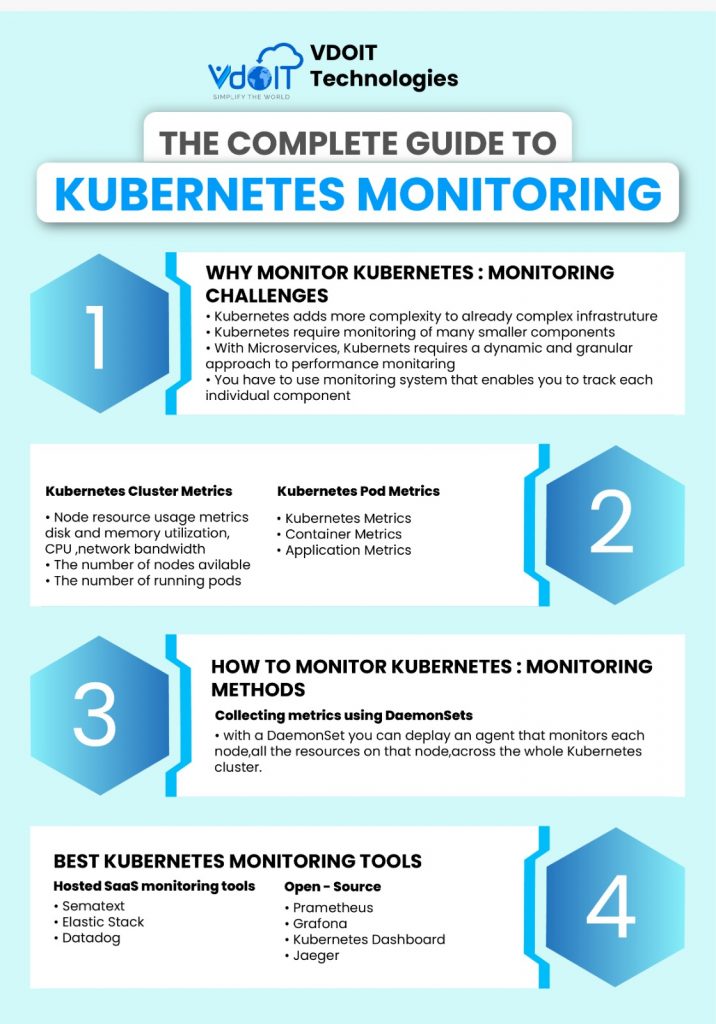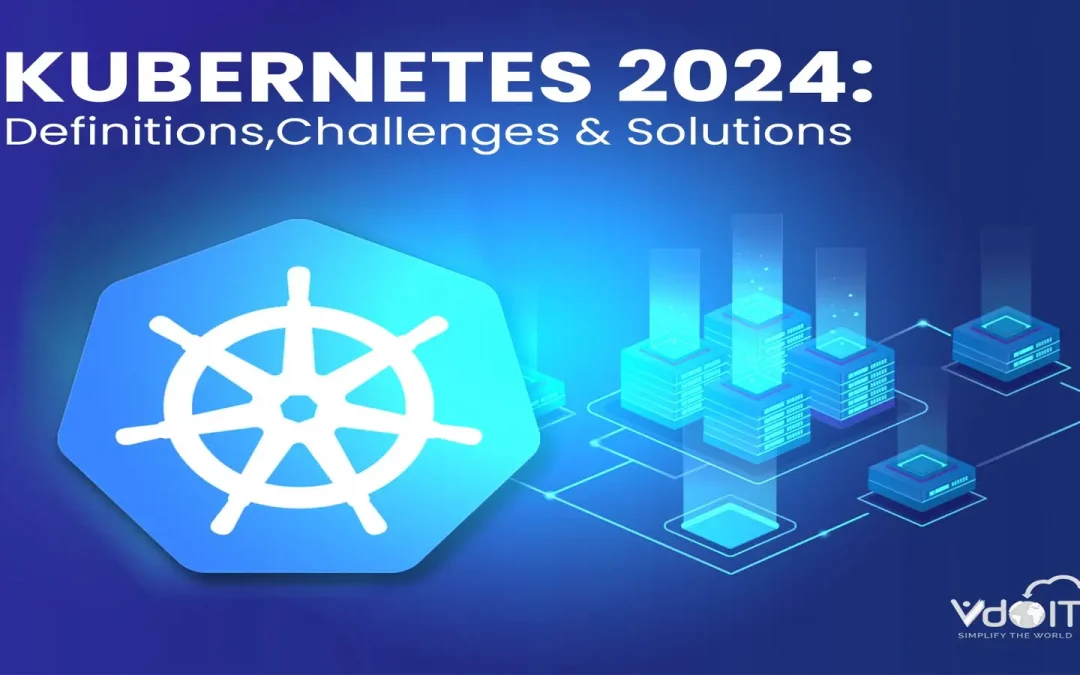Kubernetes, the leading orchestrator in cloud computing and containerization, has only grown in importance in 2024. It has become the standard for managing containerized applications, a testament to its power and versatility. However, this power comes with a level of complexity that we will delve into in this blog, exploring the definitions, challenges, and innovative solutions that shape Kubernetes in 2024.
At its core, Kubernetes automates deploying, scaling, and operating application containers. Yet, its complexity poses challenges. Security concerns, scalability issues, and resource management complexities persist. However, the Kubernetes ecosystem is constantly evolving, reassuring us that simplified user experiences, enhanced security measures, advanced scalability solutions, and resource efficiency tools are emerging.
Looking ahead, Kubernetes remains pivotal in modern application deployment and management. By embracing innovation and collaboration, we can confidently navigate Kubernetes complexities, driving the future of cloud-native computing.
What is Kubernetes?
Before diving into the depths of Kubernetes in 2024, let’s first grasp its fundamental concept. Kubernetes, often abbreviated as K8s, is an open-source platform designed to automate deploying, scaling, and operating application containers. Developed by Google, Kubernetes provides a robust framework for managing containerized workloads and services, offering features like automated scheduling, scaling, and self-healing capabilities.
Kubernetes operates based on a cluster model comprising nodes that host containerized applications. These nodes are organized into a master-slave architecture, with the master node orchestrating the deployment and management of containers across the cluster. Kubernetes abstracts the underlying infrastructure complexities, enabling developers to focus on building and deploying applications without worrying about the environment’s intricacies.
An Overview
- Kubernetes, or K8s, is an open-source platform developed by Google to automate application container deployment, scaling, and management.
- It operates on a cluster model, with nodes organized in a master-slave architecture, where the master node orchestrates container deployment and management across the cluster
- Kubernetes abstracts away underlying infrastructure complexities, allowing developers to concentrate on application development and deployment without concerns about the environment’s intricacies.
Key Features of Kubernetes 2024
The following are considered to be the key features of Kubernetes.
| Feature | Description |
| Automated Deployment | Kubernetes automates the deployment of application containers, streamlining the deployment process. |
| Scalability | It provides horizontal scaling capabilities, allowing applications to scale up or down as needed. |
| Self-Healing | Kubernetes automatically detects and replaces failed containers, ensuring high availability. |
| Cluster Management | Manages clusters of nodes that host containerized applications, simplifying infrastructure management. |
| Load Balancing | Facilitates load balancing across containers, distributing traffic evenly for optimal performance. |
| Service Discovery | Enables automatic discovery of services, allowing containers to communicate with each other seamlessly. |
| Resource Allocation | Allows for efficient resource allocation, optimizing resource utilization within the cluster. |
| Rolling Updates | Supports rolling updates, enabling applications to be updated without downtime or service disruption. |
| Storage Orchestration | Provides storage orchestration, allowing persistent storage volumes to be dynamically provisioned. |
| Extensibility | Offers a wide range of extensions and plugins, allowing customization and integration with other tools. |
What are the Challenges of Using Kubernetes?
Despite its widespread adoption and undeniable benefits, Kubernetes has challenges, especially as we transition into 2024. Let’s explore some of the critical hurdles that organizations face in harnessing the full potential of Kubernetes:
- Complexity: Kubernetes is powerful, but its complexity can be overwhelming, particularly for newcomers. Managing clusters, configuring networking, and optimizing resource utilization requires a steep learning curve, which can pose a significant barrier to adoption for some organizations.
- Security: As Kubernetes’ deployment footprint grows, so do security concerns. Ensuring the integrity of containerized workloads, securing access controls, and safeguarding against vulnerabilities demand constant vigilance and robust security measures.
- Scalability: While Kubernetes excels at scaling applications horizontally, managing the scalability of the Kubernetes infrastructure itself can be challenging. As clusters expand to accommodate growing workloads, maintaining performance and efficiency becomes increasingly critical.
- Resource Management: Efficiently allocating and managing resources within Kubernetes clusters is another ongoing challenge. Balancing resource utilization to optimize performance and cost-effectiveness requires sophisticated monitoring, autoscaling, and workload distribution strategies.

Innovative Solutions That Make Kubernetes Effective in 2024
In the face of these challenges, the Kubernetes ecosystem continues to evolve, offering innovative solutions to address the needs of modern cloud-native environments. Here are some notable advancements shaping Kubernetes in 2024:
- Simplified User Experience: Recognizing the need to streamline Kubernetes adoption, tools and platforms are emerging to simplify the user experience. User-friendly interfaces, guided workflows, and automation tools aim to abstract away the complexity of Kubernetes, making it more accessible to developers and operators alike.
- Improved Security Measures: Various tools and best practices have emerged to bolster Kubernetes security. From container image scanning and vulnerability management to network policies and encryption mechanisms, organizations are adopting a multi-layered approach to fortify their Kubernetes deployments against threats.
- Advanced Scalability Solutions: Addressing the scalability challenges of Kubernetes, innovative solutions focus on optimizing cluster performance and resource utilization. Techniques such as cluster autoscaling, nodeless Kubernetes, and advanced scheduling algorithms are enabling organizations to adapt to fluctuating workloads with ease dynamically.
- Resource Efficiency Tools: With a growing emphasis on resource optimization, tools and frameworks are emerging to help organizations better manage resource allocation within Kubernetes clusters. From intelligent workload placement algorithms to fine-grained resource quotas and limits, these solutions empower operators to maximize efficiency without compromising performance.
What Lies Ahead for Kubernetes in 2024
As we go further into 2024 and beyond, Kubernetes will remain at the forefront of cloud-native computing. With its unmatched flexibility, scalability, and resilience, Kubernetes remains the cornerstone of modern application deployment and management. However, addressing the evolving challenges requires a concerted effort from the entire Kubernetes community, encompassing developers, operators, and solution providers.
By embracing innovation, collaboration, and continuous improvement, we can confidently navigate the seas of Kubernetes, unlocking new possibilities and driving the future of cloud-native computing forward. As we embark on this journey, let’s stay vigilant, adaptable, and committed to harnessing Kubernetes’ full potential to shape tomorrow’s digital world.
For services related to Kubernetes and other cloud components, Contact us at VDOIT today!

